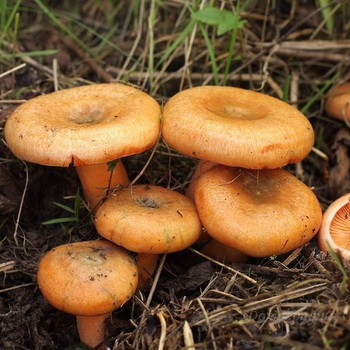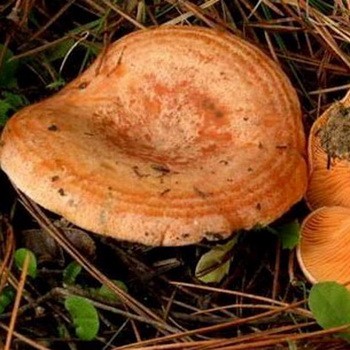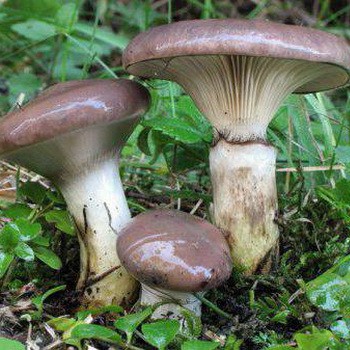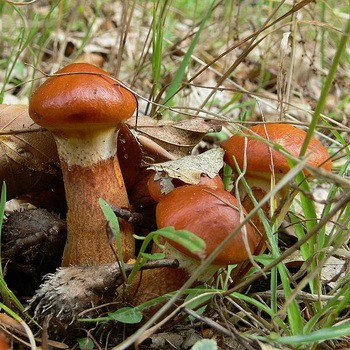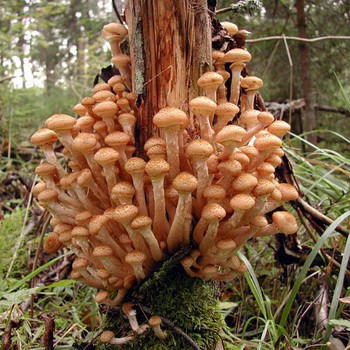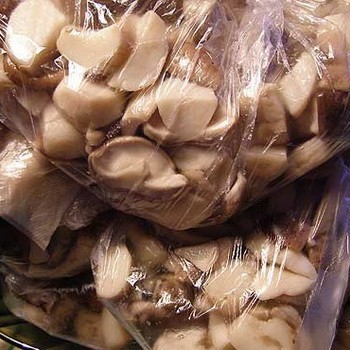Where to collect oil: the best places in the suburbs
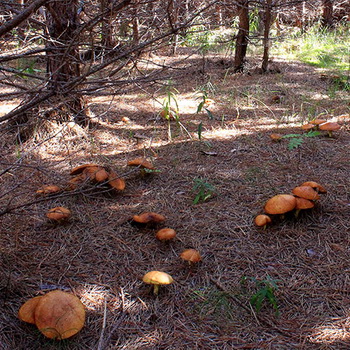
Content
In what forest oily mushrooms grow?
Experienced mushroom pickers already know by heart where to collect the butter, and at what time of the year there are a lot of them. Moreover, they are aware of specific places in the forest where butterflies grow as whole families. This mushroom deserves to be a leader in the ranking of the most delicious. It is perfect for any cooking process that is only in cooking. It’s fried, stewed, pickle, are dried, freeze for the winter and even salt. They also love butter for the content of nutrients and nutrients.
If you are a beginner and do not know where you can collect oil, do not be discouraged. Fortunately, there are a lot of useful information on books on mushrooms and the Internet on this subject. Indeed, the vast majority of mushroom pickers unanimously reiterate that the success of the “silent hunt” and a rich harvest will directly depend on the habitat of a particular type of mushroom. Thus, the first thing to do is to familiarize yourself in which forest the oily mushrooms grow.
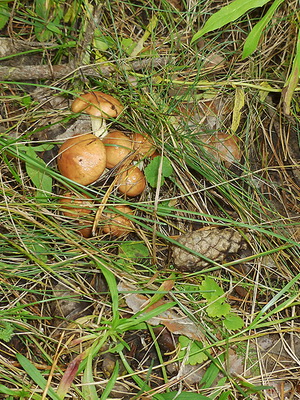
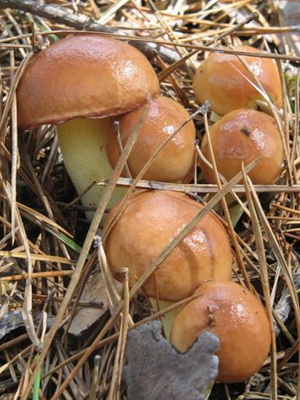
Of course, collecting butter in the forest is a pleasure. These mushrooms are widespread throughout the Russian Federation. In addition, they are found in Ukraine, Belarus, America and even North Africa.
Oil in the spruce and pine forest (with photo)
In total, there are more than 40 types of oil, 3 of which are the main ones - oily, larch and late oily. So, granular butterflies grow in a spruce forest, preferring soil from limestone. Larch, based on the name, well "attached" in deciduous forests and copses. But mixed forests and young plantings are places where late mushroom oyster mushroom grows.
However, often mushroom pickers do not pay attention to what kind of butterdish they hold in their hands - late, larch or granular. All of them boldly go to the basket, since the rules of processing and preparation for all types of oils are the same.
Basically, most often mushroom hunters “hunt” for oil precisely in coniferous forests. These mushrooms are very "friendly" with representatives of these species of the plant world - cedars, pines, larches. Therefore, going to the forest for mushrooms, look for young conifers.
Below is a photo of oil in the forest:
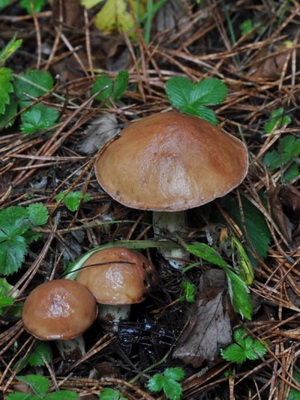
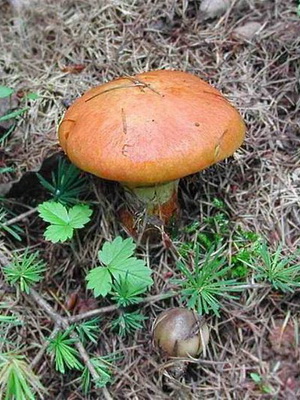
How to look for oil, where and when it is better to collect
However, it is not enough to know in which forest oily grow. After all, the forest is large, and not every pine tree you will meet this “cute” mushroom.To do this, you need to know exactly where to look for the oil in the forest. The following photo of an oily mushroom in the forest shows where he likes to grow:
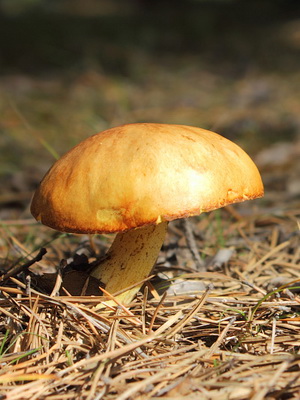
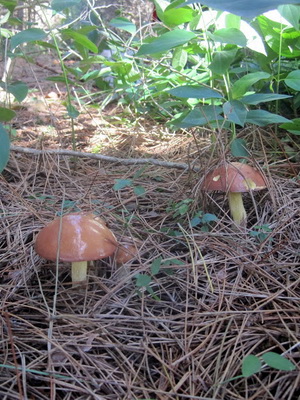
As you can see, the oil can get along well with conifers. So, in nature, this mushroom interacts perfectly with pine, so experienced mushroom pickers probably know how to look for oil in the forest. Being in symbiosis with this tree, the butterflies do not try to go far, but keep close to the pines. They love sandy soil with a bunch of pine needles, as well as forest plantations. They are comfortable at the spacious fringes, flooded with sunlight. Since the oil can’t tolerate excessive moisture, they do not need to be looked for in marshy places. In plantations with a height of about 5-8 m, which have open ground, but no bushes and grass, butterflies will not grow.
To see how butter mushrooms grow in the forest, you can see in the photo below:
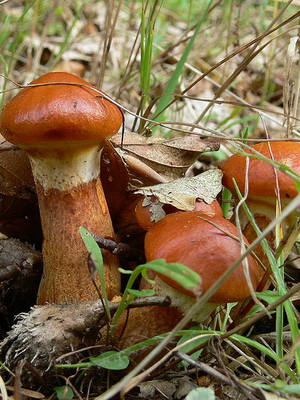
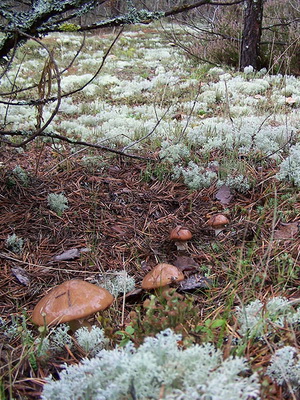
Although young pines with open glades prefer oil and butter, they can still be found in an adult pine forest. Here, their "families" usually live on a forest road or path, in which the cover of lichen and moss is disturbed.
So, it is better to collect the oleaginas where coniferous trees grow. Young fir trees, mature pines, magnificent cedars, mixed spruce-birch plantings - all this is considered a "paradise" place for their habitat. In a word: if there are coniferous needles under your feet, then a butterdish lives here.
It is also very important to know not only where the oily grow in the forest, but also how they grow. It is known that these mushrooms are very friendly and do not tolerate living alone. They grow whole families, hiding in the grass and needles. Therefore, when you find one oiler, look around: for sure there will be a whole “community” of its relatives nearby.
Important: never collect oil in forests near roads or industrial plants. These mushrooms, like sponges, absorb radiation and salts of heavy metals. Even after being cooked, they can cause serious food poisoning.
The season when butterflies appear in the forest
The gathering season, when butterflies appear in the forest, will depend on the climatic characteristics of a particular territory, as well as on weather conditions. So, it is generally accepted that these fungi begin to appear in June, and grow until late autumn. A suitable temperature for a large crop of oil is an average of 16 °. Especially plentifully grow oil after warm heavy rains. Only 5-7 hours are enough for a brown oily hat to appear from the soil. However, the life of this fruiting body also passes quickly - after a few days they become wormy and unfit for food. In case you picked a worm mushroom in the forest, do not rush to throw it away: just hang it with the leg down on a tree branch. Drying, spores will spill out, forming a new mycelium. Therefore, going to the forest for mushrooms, do not forget to visit this place again. Most likely, you will be surprised when you return: a whole "family" of butter will await you.
Having familiarized yourself with the rules for picking mushrooms, namely: where the butter grows and when to pick them, you can greatly simplify your task during the “silent hunt”.
Where do butterworms grow in the Moscow region and how to find them
The Moscow region occupies large-scale territories around a large metropolis. Most of it is covered with forests and copses, in which a huge amount of edible mushrooms is concentrated. From summer to autumn, lovers of the “silent hunt” go to the forest and pick up full baskets of mushrooms. However, it is difficult for a novice mushroom picker to determine where to collect oil in the Moscow Region. For this, special maps of directions have been drawn up where you can go for mushrooms. It must be said that any direction of the Moscow Railway can be called “vicious" places.
It is known that Muscovites are very fond of collecting butter, because they always grow a lot after heavy rains. In addition, the “hunt” for these mushrooms is simply a win-win option. If you are not lucky with representatives of other types of fruiting bodies in the forest, then with oils you can definitely gain success and collect more than one basket.
So, where do butterworms grow in the Moscow region? There are 5 main areas: Savelovskoye, Yaroslavl, Leningrad, Kazan and Kiev. Many experienced mushroom pickers know how to find butter in the forests of Moscow Region, so they will be happy to help you and indicate the appropriate directions.
If you are a beginner mushroom picker, or just want to spend time with benefit and pleasure, remember one important rule. Forests in the Moscow Region, of course, are not taiga thickets, but you can easily get lost in them. Therefore, it is advisable not to go deep into the forest, or go in search of oil with a person who is well versed in the area.
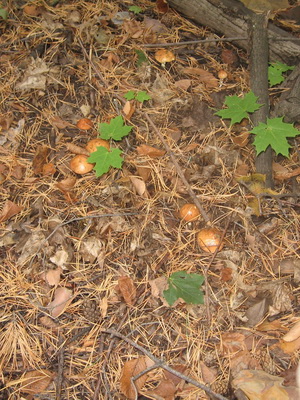
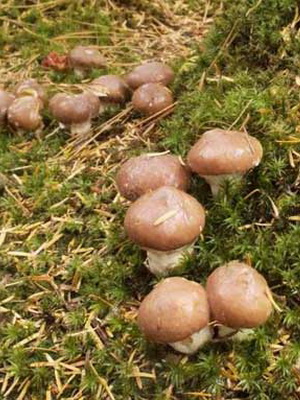
This photo shows which oils grow in the pine forests of the Moscow region.
Study the map, memorize mushroom places and feel free to go to the forest for oils.
